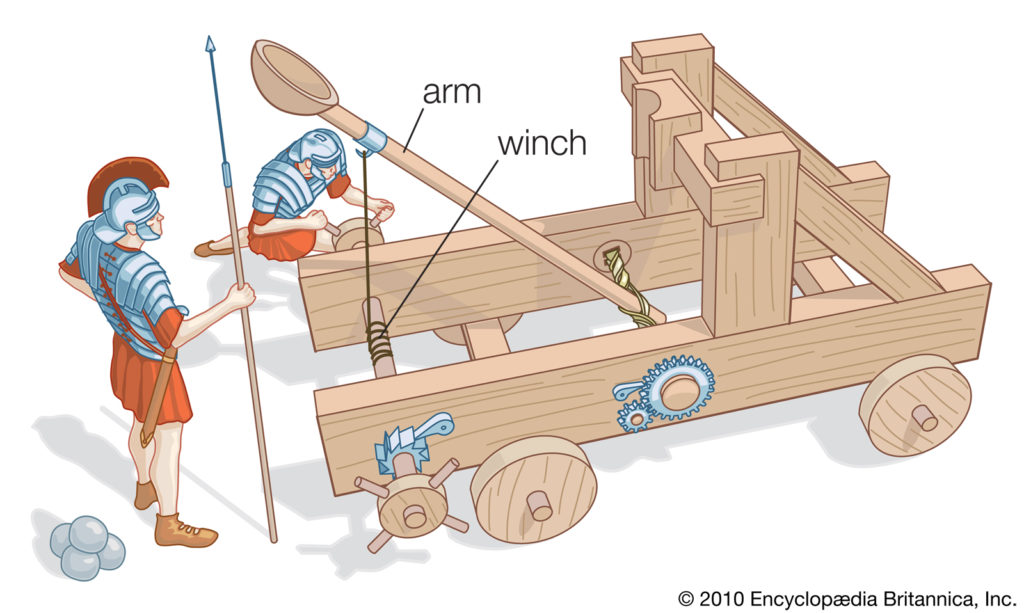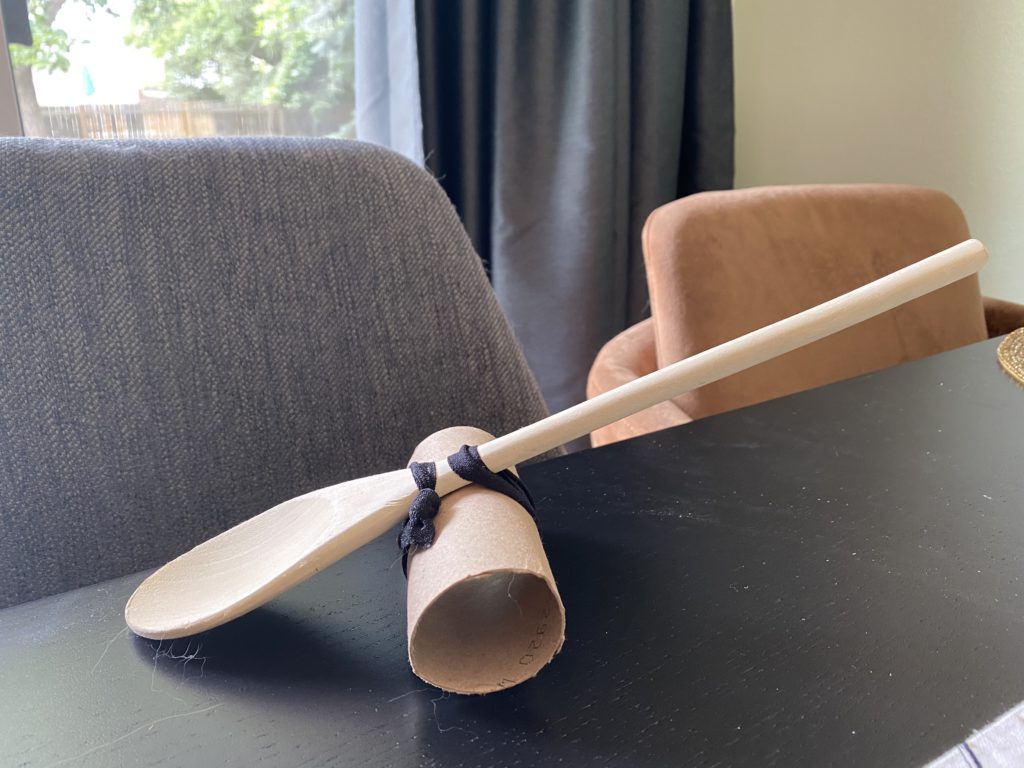Catapults have been around since the ancient Greeks and Romans started using them to hurl things at their enemies. Probably, sometimes at each other. But, to be specific, the Greek Dionysius the Elder of Syracuse, invented the catapult about 400 BCE.
Your challenge this week if you choose to accept it – make a catapult or three!
Disclaimer: We highly discourage against hurling things at anyone at all. Instead choose a box from the recycling pile and try landing your projectiles in that. Test your aim and turn it into a competition!
Supplies:
- Toilet paper roll (empty)
- Hair elastic
- Wooden spoon
- Cork
- Rubber band
- Plastic spoon
- A box of any size (the smaller it is the harder it will be to aim at it!)
- A variety of objects to catapult!

I wanted to tell you how a catapult works, but I was getting my words all tangled up! So I went to the experts at Scientific American, and this is how they explain it:
A catapult works because energy can be converted from one type to another and transferred from one object to another. When you prepare the catapult to launch, you add energy to it. This energy is stored in the launching device as potential, or stored, energy. When you let go, this stored energy is released, converted into energy of motion and transferred to the missile (the launched object), which then flies through the air.
Okay, that makes sense, right?
So, let’s engineer some catapults that we can use to transfer energy!
I have two examples for you to make today, but you can use anything in your house to make even more.Get creative! And, I have a special surprise at the end of this post that will be a fun project to do outside on a hot summer day. (We seem to be getting a lot of those recently…)
Grab your supplies, and here we go!
Instructions:
Catapult #1
- Gather the plastic spoon, cork. and rubber band.
- Place the cork under the bend in the spoon and use your rubber band to hold them together.
Done – catapult #1 is finished!

Catapult #2
- Gather the wooden spoon, toilet paper roll (empty…), and a hair tie.
- Place the wooden spoon on top of the toilet paper roll and use the hair tie to bind them together.
Done – catapult #2 is finished, too!

Now, for the fun part. Here are a few examples of different things you can use as projectiles. You could also use popcorn, marshmallows, jelly beans, pom poms, cotton balls, and so many other things!

We’re going to make this a little more of a challenge and try and catapult one of these items into a box. I’m going to try both catapults with the same projectile for the experiment. Let’s see how good my aim is! Now which projectile should I choose? Can you guess? I’ll give you a hint: I’m feeling curious.
Here we go! Don’t forget to put on your safety glasses.
Link to video: https://youtu.be/VZY6aNIyAkI
Well, that was interesting! It looks like Catapult #2 has the best energy transfer! I did several off-camera shots and Catapult #1 NEVER hit the target… However, Catapult #2 was accurate much of the time.
Why do you think that is? Could it be because it’s bigger, longer, or can you think of anything else that’s different about it? Now we’re hypothesizing!
For something a little extra, here’s a funny outtake from my catapult video-making experience. It’s good for a little laugh!
Link to Outtakes video: https://youtu.be/K0MbbmXaXnE
And, just like I promised, here’s your surprise!
If you need to cool off in all this heat, try this experiment from the Museum of Science and Industry in Chicago to make your own water balloon catapult system!
If making catapults has engaged your engineering curiosity, and you want to learn more, be sure to check out these items from the library.
Book Recommendations
The art of the catapult: build Greek ballistae, Roman onagers, English trebuchets, and more ancient artillery by William Gurstelle
Big book of building: duct tape, paper, cardboard, and recycled projects to blast away boredom by Marne Ventura
Cool engineering projects: fun & creative workshop activities by Rebecca Felix
Amazing recycled projects you can create by Marne Ventura
Make sure to share your fabulous catapults with us on social media using the hashtag #PoudreLibraries.

